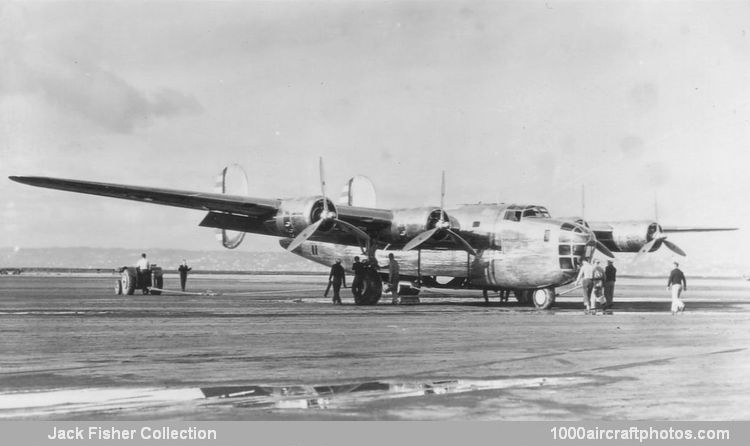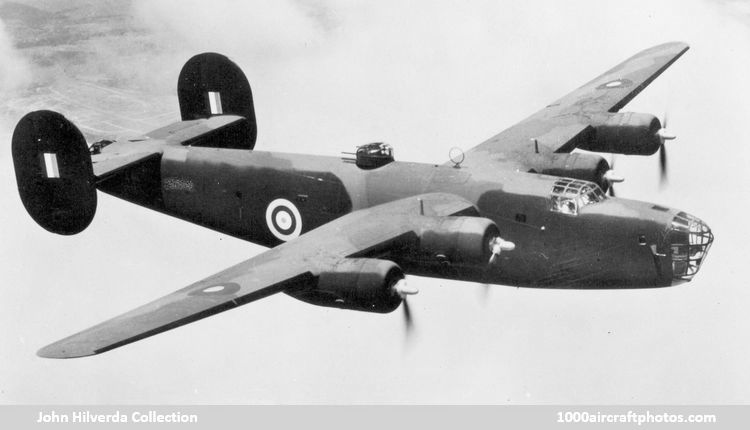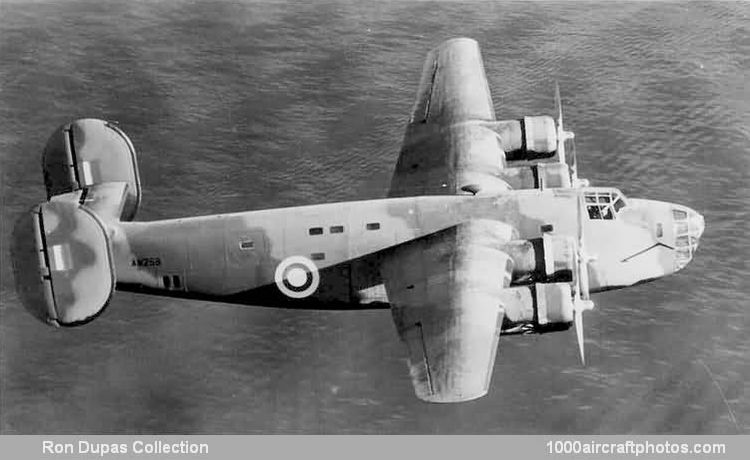05/27/2017. Remarks by Johan Visschedijk: "In January 1939, Reuben H. Fleet (Consolidated, company president, and Isaac M. Laddon (chief engineer) approached the USAAC with the proposal that Consolidated produce a long-range bomber superior to the Boeing B-17. Earlier, the USAAC had suggested that Consolidated build the B-17 under license to provide an additional production line, but Consolidated personnel returned from an inspection trip to Seattle convinced that a better aircraft could be designed. By the end of January, a mockup had been built and inspected at San Diego and on February 1, the USAAC issued Type Specification C-212, a formality as the two companies solicited for proposals, Martin and Sikorsky, only had three weeks to respond. Therefore, on February 21 the Model 32 was recommended for approval and a contract was signed on March 30 for a single prototype, designated XB-24 (s/n 39-556) and to be completed by December 30, 1939. This was followed by orders for seven YB-24s (s/n 40-696 to 40-702) in April and 38 B-24As (s/n 40-2349 to 40-2386) in August.
A speedy development was made possible by the Model 31. The flying boat's Davis wing with hydraulic flaps and the twin tail was adopted for the bomber and the nose wheel landing gear, a first for a heavy bomber was in part adopted from the beaching gear of the Model 31. Two deep bomb bays could carry eight 1,100 lb (499 kg) bombs, twice the capacity of the B-17, and six hand-held 0.30 in (7.62 mm) guns were carried in the nose, waist, dorsal, ventral, and tail positions. Power was provided by four 1,200 hp Pratt & Whitney R-1830-33 Twin Wasps fourteen-cylinder radial engines, fitted with a mechanical supercharger in PBY-type nacelles. Laddon shared the credit for the rapid pace of design and construction with the USAAC, which had allowed Consolidated to proceed unhindered.
The remarkably swift progress lead to wing and fuselage mating on October 26, and on December 29, 1939, the prototype made its first flight from San Diego in the hands of chief pilot Bill Wheatley and test pilot George Newman, together with flight engineers Jack Kline and Bob Keith. The seventeen minute flight was to lead to 18,431 more aircraft, the largest production of any American combat type and the highest number of a bomber aircraft ever. Such a unique production record is all the more remarkable for such a large, four-engined aircraft, and the type operated over more operational fronts for a considerably longer period, and was produce in a greater variety of versions than any other Allied or enemy bomber.
The prototype B-24 design top speed was 311 mph (501 kmh), but was only able to achieve 273 mph (439 kmh), hence on July 26, 1940, the USAAC recommended changes to improve performance, especially at higher altitudes. Subsequently the XB-24 was re-engined with R-1830-41 engines fitted with General Electric B-2 turbo-superchargers on the lower surface of each engine nacelle. The air intakes for the turbo-superchargers were placed on the sides of the engines, and the oil coolers were relocated to the flanks of the front cowlings, which gave the engine nacelles the characteristic elliptical cross-section that became familiar on later production aircraft. Furthermore the prototype was fitted with electrical engine primers, modified engine controls, self-sealing tanks, protective armor in the crew positions, and a larger tail plane, while it had its leading edge slots removed.
Redesignated XB-24B and reserialled 39-680, the modified aircraft was flown again on February 1, 1941, and it was able to attain a maximum speed of 310 mph (499 kmh). On August 13, 1941, the XB-24B was accepted by the USAAF, renamed from USAAC on June 20, 1941. The XB-24B was bailed to the manufacturer and had been converted to a VIP transport by the end of 1944; the aircraft was scrapped at Brookley Field, Alabama on June 20, 1946.
Meanwhile, in April 1940, the French Purchasing Commission had ordered 175 of an export version, the LB-30MF. The term LB-30 was not a US military designation (the USAAC's B-30 was a never built version of the Lockheed Constellation), nor was it a manufacturer's model number (Consolidated's Model 30 was the USN XPB3Y-1 patrol bomber, also never built). To arrive at the LB-30 nomenclature, Consolidated chose the next open number after the last of many company 'LB' (Land Bomber) design concepts of 1938-1940, of which there were twenty, with intermittent gaps, beginning with LB-4 and ending with LB-29, even though it was now using such a number for a totally different purpose. The 'MF' stood for 'Mission Franšaise', the French purchasing mission which ordered the planes.


